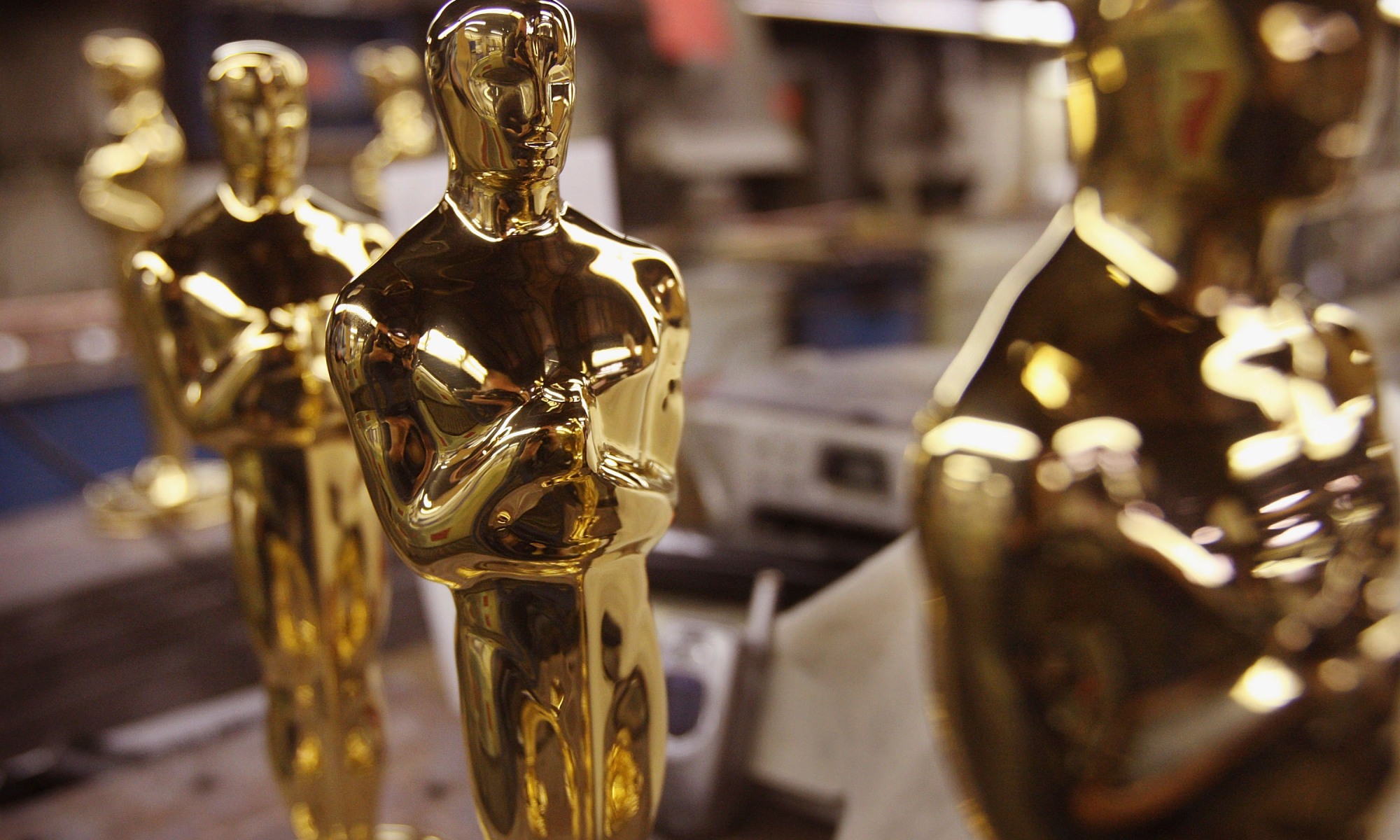Pete Hammond is Deadline’s awards columnist. This article appeared in the Feb. 6 issue of AwardsLine.
As the industry kicks into full awards mode, with one guild after another handing out trophies to whomever they consider the year’s best in any given field, it’s become increasingly clear this is a year like we have not seen in a while. Certainly every season we go through this ritual of watching the crème de la crème of the industry line up to get awards, but rarely have we seen as dense a field of top contenders, and especially deserving ones, as we have this year. The common denominator among most, if not all, of the contenders in Oscar’s 24 categories is how difficult it was in the first place to get any of these films made in a sequel-happy, franchise-loving, play-it-safe motion picture industry.

For example, Steven Spielberg began talking about Lincoln with Doris Kearns Goodwin before she started writing the book and struggled for well over a decade to bring it to the screen, getting turned down by three studios in the process. And first-time feature filmmaker Benh Zeitlin went against all industry norms to make the unique and hard-to-define Beasts of the Southern Wild come to life. But no matter who the filmmaker is, the most often-heard mantra is stick to your core beliefs and vision and somehow an Oscar-worthy film can be willed into being. Even James Bond ran into trouble when MGM went bankrupt and a normal 2½-year process turned into twice that for Skyfall, which went on to win five Oscar nominations. It also got recognition as one of the year’s best pictures from the Producers Guild, as well it should, considering what its veteran producers went through to just to make it.
Of course, it doesn’t matter who you are or how many Oscars you have won, it is never easy. Life of Pi’s Ang Lee worked a grueling five years before finally seeing his unusual and once-thought unfilmable film version of Yann Martel’s book get to the screen and earn $500 million-plus worldwide and counting. And 20th Century Fox had it in development for 10 years. “Everyone was nervous. The studio dropped me twice. It was a kid, water, a tiger, digital, 3D, Taiwan location, a philosophical movie, a film about someone adrift in water who wasn’t Tom Hanks,” Lee explains. It took him a solid year just to prep the digital water scenes before shooting any footage.
For a film on the opposite end of the scale, Silver Linings Playbook, which relies almost solely on its actors for its special effect, the journey was just as long and just as hard. It started with two late producer-directors Sydney Pollack and Anthony Minghella before eventually finding its way to David O. Russell, who wanted to make it five years ago, even before The Fighter, but found that the stars weren’t aligned yet. They eventually would be, but not before blood, sweat, and tears went into a shoot that in the end had to be accomplished in a remarkable 33 days for a 150-page script.
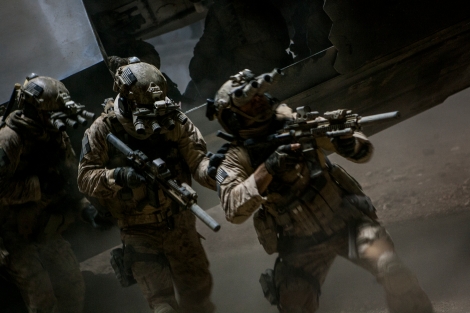
Or what about Kathryn Bigelow and Mark Boal’s Zero Dark Thirty, the movie that was developed about the hunt for Osama bin Laden? The filmmakers had to turn on a dime when bin Laden was killed, rewriting the concept and reporting the story at the same time it was being crafted. And Argo, a true declassified story about the amazing CIA mission to use Hollywood know-how to help rescue six American hostages stuck in the Canadian Embassy during the 1979 Iranian crisis, spent years in development as a George Clooney project but only finally found its way through Ben Affleck.
Then there’s Les Misérables, a true worldwide stage musical phenomenon that still took 27 years to get to the screen and went through hell to do it. Or Quentin Tarantino’s Django Unchained, which during a 130-day shoot saw its leading actors sidelined by emergency surgery when Christoph Waltz’s horse was bitten by a bee early on, and Waltz, thrown to the ground, had to have a pelvic operation. Then Jamie Foxx’s shoulder gave out, and he had to go into emergency surgery in the middle of production.
These select few, which made the immense effort required to see their films through, earned Oscar nominations for a job well done. These enormously talented film artists can still stand very proud that they got through it, made something great, and are headed to the Dolby Theater on Feb. 24. Some will get to the stage and some won’t, but this year in particular they all deserve to be called winners.
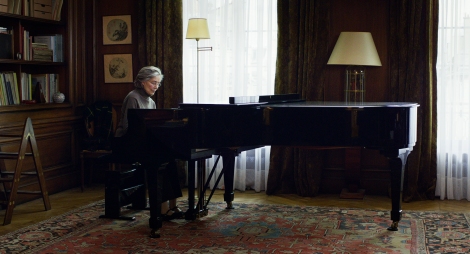
Amour (Sony Pictures Classics)
Producers: Margaret Ménégoz, Stefan Arndt, Veit Heiduschka, Michael Katz
Awards: 5 Oscar noms, Cannes Film Festival Palme d’Or winner, 4 European Film Awards (best actor, actress, director, film), 1 Golden Globe win (foreign language film), 4 BAFTA noms, 1 CCMA win (foreign language film), and an Indie Spirit nom (international film).
No simplicity in small sets: “It wasn’t a very fast shoot. It took nine weeks. Even though the film takes place over two hours in roughly the same room, it’s complicated to dress the set, not only to make it interesting but that it syncs in every scene. Our actors weren’t young people, and they need more time to learn the script,” Ménégoz says.
No business in geriatric scripts: “Michael’s critical and boxoffice success with The White Ribbon ($19.3 million) didn’t open doors to financers. A lot of them were afraid of Amour’s subject matter surrounding elderly, ill people. It’s a taboo subject. I was able to make the film at €8 million ($10.8 million), but the French were so afraid that they didn’t give me enough money; I had to go back to our German coproducer,” Ménégoz recalls.
Seriously, we really need you for this: “Jean-Louis Trintignant stopped making movies years ago, but he’s worked nearly every day in all the live theaters in France. He completed a tour of poetry readings, and he likes his work in the theater. He is an actor that likes to be in front of the audience—on the set of a film, they’re very far away. He loved Caché by Michael Haneke. I gave Jean-Louis the script for Amour, and he told me that he didn’t want to make any more films: ‘I’m too tired and old. I like the theater,’ he said. He read the script and liked it, especially that it was comprised of three main characters and took place from room to room. He thought the dialogue was very precise, but found it to be a sad script. ‘I won’t do the film,’ he said. So I talked to Jean-Louis three or four more times until he finally accepted. Emmanuelle Riva always wanted the part. She auditioned with other actresses, but she knew deeply in her heart and head that this was the part for her. It was obvious she was the best as she made the perfect couple with Jean-Louis,” Ménégoz says.—Anthony D’Alessandro
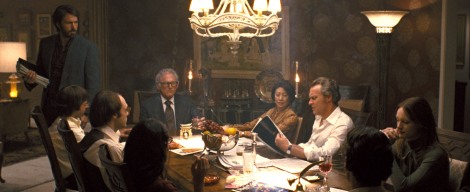
Argo (Warner Bros.)
Producers: Grant Heslov, Ben Affleck, George Clooney
Awards: 7 Oscar noms, 7 BAFTA noms, 2 Golden Globe wins (director and drama), 2 CCMA wins (picture and director), 1 SAG Award (ensemble), PGA Zanuck Award, plus DGA and WGA noms.
Having a writer on the set: “On my other two movies, stuff had to be rewritten, and I would go off into a corner and kind of puzzle over it. It would take me forever, and I would stay up all weekend. (On Argo), it was so nice to be able to say to (screenwriter) Chris (Terrio), ‘I don’t think it’s clear exactly what the agenda is of the State Department in this scene. Could you rewrite that scene?’ and have him come back later with the answer. I felt like I was looking at the back of a test,” Affleck explains.
Scale and scope mean challenges: “(For) those big protest scenes in the beginning, we had 2,000 actors, and those days were really impossible days. We had bad weather, but just logistically speaking, to get 2,000 people to a set, ready to shoot, by 6 o’clock in the morning, all having to go through wardrobe that day because you don’t fit them the day before, takes military precision. Everything takes forever—just to reset for the shot and to get everybody turned around and get everybody looking in the right direction is a major effort,” Heslov says.
But it was still kinda fun: “It was cold, it was raining, it was very hard to keep people around and, of course, it turned out somehow we didn’t have enough food—there were all sorts of problems like that. Meanwhile, I’m worrying about, ‘OK, let’s do the big shots with the cranes,’ and as we lose people, I keep making the big shots tighter and tighter and tighter because I’m worried people are going to start just walking off the job. The other issue was that the people who were available to be around all day to come be extras in movies are the elderly. The younger people are working. This is supposed to be a student revolution; the students are in school. So basically we had a lot of folks who were over 65 in a student revolution. So they just made up for it with passion—chanting, going nuts. It was ultimately exhilarating, fun, and thrilling—it felt like it had a real partnership,” Affleck explains.
Connecting with extras in L.A.: “It was intense. People had these stories of, ‘I was there,’ ‘This is how we escaped,’ so it just got overwhelming. It was like simultaneously shooting extras and day players and (doing) research. Not only were we hearing it, but they were telling everyone in the crew, and people in the crew were really moved. Up until that time, they had looked at it just as a movie, and not something based on historical events that were incredibly traumatic. So the whole movie absorbed an extra level of seriousness just being around the Persian population of Los Angeles; the majority of them left right around the revolution,” Affleck recalls.—Christy Grosz
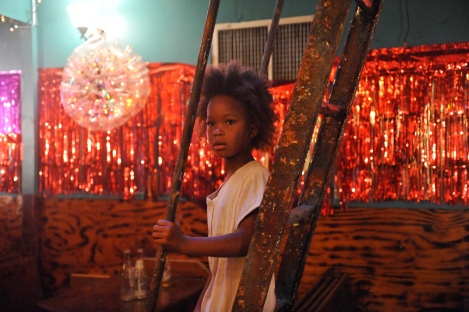
Beasts of the Southern Wild (Fox Searchlight)
Producers: Dan Janvey, Josh Penn, Michael Gottwald
Awards: 4 Oscar noms, 4 Cannes Film Festival awards (FIPRESCI, Golden Camera, Prix Regards Jeune, Ecumenical Jury), 2 Sundance Film Festival wins (Cinematography, Grand Jury Prize), 4 Indie Spirit noms, 1 CCMA (best young actor/actress for Quvenzhané Wallis), 1 BAFTA nom.
Epic demands: “We had to find a 6-year-old, and we wanted to make this film on an epic scale on a low budget,” producer Josh Penn revealed at the PGA Awards Breakfast Jan. 26. “Then we had to make these giant prehistoric beasts that we didn’t want to do via computer, but rather live beings, so we got these baby pigs. Then once you have baby pigs, how do you make them 15 feet tall? Plus, none of us had made a feature film before.”
Cherchez la femme: “We had a similar challenge to Ang Lee (on Life of Pi) in searching for a movie star who we could rest the entire movie upon her shoulders. It was like the Hugh Jackman kind of thing with Les Misérables where there was only one person who could play the part, and they were somewhere in the first through fourth grade of Louisiana. Literally, a friend of Quvenzhané Wallis’ mother saw fire in (Quvenzhané) and said to her mother, ‘Quvenzhané likes to play make-believe. Why don’t you bring her to this audition?’ She never thought of acting before. We saw 4,000 kids across Louisiana and thought someday, this girl would walk into our lives. If we didn’t find this girl, there was no reason to make this movie.”
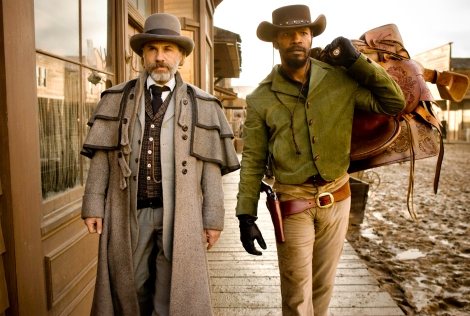
Django Unchained (The Weinstein Co.)
Producers: Stacey Sher, Pilar Savone, Reginald Hudlin
Awards: 5 Oscar noms, 5 BAFTA noms, 2 Golden Globe wins (supporting actor Christoph Waltz, screenplay Quentin Tarantino).
Location, location: “Nothing was easy about this movie. It was challenging from day one: Getting going, scouting New Orleans and Mammoth Mountain, then building our location there and realizing that we had no snow. Then uprooting to Wyoming, and Quentin driving by an elk field and saying to our line producer and location manager, ‘I want to shoot there.’ Well, that’s a challenge—it’s a wildlife preserve! Quentin will look at you at any given moment and say, ‘I need this actor that I shot with three weeks ago, and I need him tomorrow,’ ” says Savone.
“He always knew when he saw two or three of us approaching, that it was something large like global warming that we had to deal with —like the time when we had to inform him that it’s not going to snow in Mammoth for the first time in 100 years,” adds Sher. “There were a lot of ‘Bring me the broomstick of the Wicked Witch of the West moments.’ But we had a joke among the three of us: ‘No’ is not an option.”
Addition and subtraction of actors: “We had huge movie stars wanting to do day-player parts, people we had to work a schedule around given the film’s logistics. However, every one of those actors are used to being No. 1 on the call sheet, rightly so, so everyone typically schedules around them. Because of everyone else’s schedule, snow, weather, and location, we couldn’t do that for everyone. Joseph Gordon-Levitt and Anthony LaPaglia went off to make other movies. The happy accident was that our schedule and Jonah Hill’s changed, making him available. Who ends up having Jonah Hill in one scene? We were so blessed, but we always knew the tail couldn’t wag the dog. Quentin needed to make the movie the way he needed to make it,” explains Sher.
Bee-stinging serendipity: “Christoph Waltz’s horse was stung by a bee during pre-pre-production, and Christoph was thrown and it was going to be a while before he could ride again. This is where the idea of the tooth wagon came from. Christoph suggested, ‘What if I rode a wagon?’ and Quentin and the late J. Michael Riva came up with the wagon, that magical tooth. It was heartbreaking when we lost Michael, and it was devastating for the film, the crew, and his family,” says Sher.—Anthony D’Alessandro
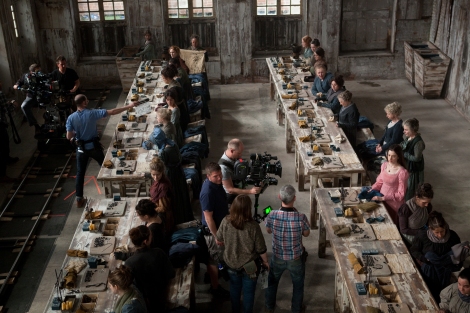
Les Misérables (Universal)
Producers: Cameron Mackintosh, Eric Fellner, Tim Bevan, Debra Hayward
Awards: 8 Oscar noms, 1 CCMA win (Anne Hathaway best supporting actress), 3 Golden Globes (best musical/comedy, supporting actress Hathaway, Hugh Jackman for lead actor in a comedy/musical), 1 SAG win (supporting actress Hathaway), and 1 DGA nom.
The Long Road: “I was originally going to do it 25 years ago after Les Misérables opened on Broadway and came close with Alan Parker. Over the years, we had inquiries, then in 2010, Eric Fellner (approached me); we’re Chelsea football fans, and we got to know each other socially. I like Working Title and they’re a very good company. Bill Nicholson started work on a screenplay. And then Tom (Hooper) rang up and asked to meet me. Being a complete film virgin I hardly knew anyone, and The King’s Speech was only just doing rounds at Sundance. Tom spoke passionately about how he would do it and that he felt it should be recorded live, and I felt passionately about that. That was the clincher, because Tom wanted to take what was a big leap in the dark. Les Misérables isn’t a normal musical; you need people who are comfortable telling a story through music. Tom Hooper was the man to do it. I’d been looking for directors over the years, and the fact that Tom came to me with a POV was the clincher,” Mackintosh explains.
No way, José: “There was a suggestion that it should be done in 3D, and I was very against it. Even though it’s my first film, I have joint final cut with Tom and Eric, and I represented all the music on behalf of Alain and Claude-Michel. It was a collaboration and couldn’t be any other way because I’d been so involved in the material for 30 years. This was the best way,” says Mackintosh.
Blowing up the stage: “The key challenge was finding the balance of reality, that it looked and felt authentic but at the same time it needed to be heightened. The style had to be similar to the style of the show. Gliding in and out of spoken word and singing so seamlessly that you didn’t realize they’re singing most of the time. Cinema is a medium of realism, and we had to find our brand of realism,” adds Mackintosh.
Making the impossible, possible: “This was one of the hardest films we’ve done. It’s a genre that’s challenging by its very nature—people aren’t used to going to see a musical in a movie theater. We also had to make sure that in adapting Les Misérables, we didn’t alienate fans, and having the original team of Claude-Michel Schönberg, Herbie Kretzmer, and Cameron Mackintosh, we were able to keep all the original DNA intact. Then, shooting a film with an appetite of $100 million for $60 million was interesting,” says Fellner.—Cari Lynn

Life of Pi (20th Century Fox)
Producers: Gil Netter, Ang Lee, David Womark
Awards: 11 Oscar noms, 1 Golden Globe win (best score for Mychael Danna), 2 CCMA wins (cinematography, visual effects), 9 BAFTA noms, DGA nom, WGA adapted screenplay nom.
Practical preplanning: “I didn’t know if could do this film. It was still waiting for me after Taking Woodstock. I began to think about it. It was unsolvable both on the economic and artistic sides: The two sides that will never meet, like Pi. Well, what if I had another dimension? And I thought 3D,” Lee said at the PGA Breakfast Jan. 26. “The only reasonable place to do this was Taiwan—I needed every resource from Hollywood. I brought my kids to school over there. It’s a long process. I did all the casting and previsualized the water section, all 70 minutes of it.”
Finding Pi: “Three thousand people auditioned for the part. It was crucial to find a 16-year-old Pi. There’s no Indian 16-year-old movie star. So I had to search for new faces. We have an army under casting director Avy Kaufman. We just asked every high school in India. Most of those who auditioned hadn’t done more than a school play, if that. After three rounds, we came down to 12. Suraj Sharma was one of them. Later, I found out, he didn’t go through the audition. He escorted his younger brother to the audition, and the casting director said, ‘What about you?’ When I met him, he looked like Pi. He’s the everyman. I felt his vibe in his soulful, deep eyes from my professional instinct. When I read him, it was heartbreaking. He started to cry when he told me one of the second stories (I gave him). It was heartwrenching. Halfway through (the audition process), he was the kid. So he anchors everything: The older and younger Pi, the whole picture around him. I was very lucky. He never acted before, and I had three months to drill him. We shot the movie in order so that he could lose weight,” adds Lee.
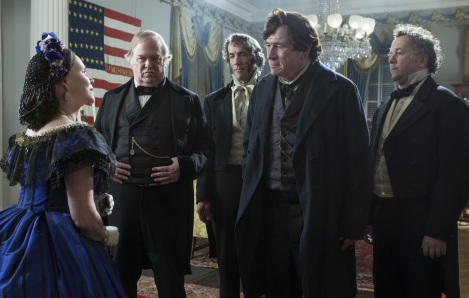
Lincoln (Disney-DreamWorks)
Producers: Kathleen Kennedy, Steven Spielberg
Awards: 12 Oscar noms, one Golden Globe win (best actor drama, Daniel Day-Lewis), two SAG wins (best actor Day-Lewis, supporting actor Tommy Lee Jones), three CCMA wins (actor, adapted screenplay, score), 10 BAFTA noms, DGA nom, WGA adapted screenplay nom.
No stone unturned: “On the surface, it looks like one goes out, buys Doris Kearns Goodwin’s book, hires the finest American playwright, gets Steven Spielberg, and just add a little water,” said Kennedy at the PGA Awards Breakfast Jan. 26. “When Tony Kushner’s 500-page script arrived, Steven called and said, ‘What are we going to do? I can’t make this!’ Tony asked, ‘Do you think we can do it as a miniseries?’ Whittling down the script was a laborious process and took years. It wasn’t until Steven recognized a suspense drama inside the legislation, and that isn’t something you walk into a studio and say, ‘Hey! Here’s a great idea!’ It was essentially 15 pages of Doris’ book, but the philosophical idea behind Lincoln having the foresight to bring people into his cabinet who didn’t agree with him was the foundation of the story.”
Getting everyone on the same page: “We had an extraordinary reading in Cooperstown, NY. Doris pulled together an illustrious group of people to read the script for the first time. We knew there were many historians that wrote different accounts of Lincoln and had several different interpretations,” adds Kennedy. “Those fascinated with the voice of Lincoln; details like that we had to extrapolate. I think Tony read 300 books before he wrote this script. He read many details that came from The New York Times. When those debates went on with the 13th amendment, much of what Thaddeus is saying goes right down to ‘nincompoop.’ ”
Determined casting: “Daniel said no a lot to the role. But it was an exercise in tenacity on Steven’s part. Daniel inhabits that role. His process for determining what he’s going to do next is a long one. Playing Lincoln was something he wasn’t going to come to easily. When he said yes, it was around War Horse. We had 150 speaking parts that we wanted to cast. Thank God for the Internet. It allows directors and producers to get into a room and look at a wide variety of talent. We had the benefit of Tony Kushner who had amazing relationships with amazing actors in New York. We had these big boards in front of us with faces of real people. We knew it was going to be hard to keep track of the Democrats and the Republicans and knowing that the Democrats are what the Republicans use to be, and whether they were from the north or the south, when the vote took place, keeping track of who you saw before, all of that was a quite a jigsaw puzzle,” explains Kennedy.
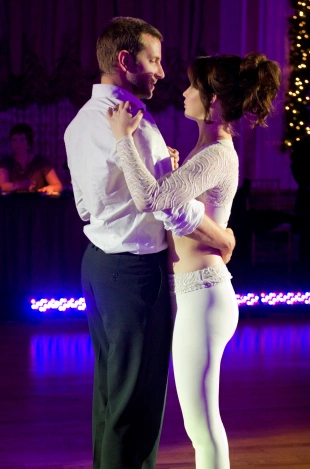
Silver Linings Playbook (The Weinstein Co.)
Producers: Bruce Cohen, Donna Gigliotti, Jonathan Gordon
Awards: 8 Oscar noms, 4 CCMA wins (acting ensemble, actor in a comedy for Bradley Cooper, actress in a comedy for Jennifer Lawrence, best comedy), 1 Golden Globe win (best actress in a comedy/musical), 1 SAG win (best film actress), 5 Indie Spirit noms, WGA adapted screenplay nom.
Synthesizing: “Getting the tone right was a challenge,” says Cohen. “The script that David O. Russell had written and the movie we fell in love with was an intense family drama and romantic comedy. Those types of films are very hard to do. It’s hard to market them and assemble them.”
Timing: “Making this movie in 33 days was a Herculean undertaking, and the script was 152 pages long. That’s a challenging schedule for any movie, let alone a script that is that long—40-45 days would have been ideal,” says Gordon.
Falling stars: “When we received the greenlight from the Weinstein Co., as a producer you typically take the money and say, ‘OK, here’s the start date.’ But Mark Wahlberg (who was to play Pat Jr.) had Contraband. We would have been backed into Thanksgiving 2011, and we couldn’t go beyond that date in terms of shooting given our budget constraints. It would have meant we pushed into the New Year in terms of shooting. Then Anne Hathaway (who was to play Tiffany) had this crazy Dark Knight schedule. They would get her for this huge period of time, and then she would drop in and out of that schedule,” explains Gigliotti.
The right faces at the right time: “Casting was the biggest challenge and getting the right actors in these roles. By comparison to the other films that are nominated, we had a pretty small budget, and it’s not as though we had a lot of money to spend in terms of cast. We had to have actors that were recognizable in order to make the numbers work—that’s for the business side. The challenge for the creative side is to find actors who could inhabit those characters and be authentic. Bradley Cooper is a big movie star in terms of The Hangover. That’s a plus on the business side, but then one needed to evaluate whether he was right for the role. That’s a total tribute to David O. Russell since he understood Bradley’s depth and how he could get that performance. Jennifer Lawrence was a different kettle of fish. She was in the middle of Hunger Games. We didn’t know it was going to be so behemoth. She did the Skype interview; we showed it to Harvey Weinstein, who is fearless when it comes to these things. He took one look and said, ‘Cast this girl! She’s unbelievable!’ I don’t know if we would have made this movie if Bob De Niro said no. We didn’t have a lot of money. How do we get Bob De Niro and not pay him a fortune? It came down to David. It’s really a potent thing when David and his actors connect. Jacki Weaver was the casting director’s idea. Jacki was in a production of Uncle Vanya in Washington, D.C. One look at her eyes and Cooper’s eyes and you think they were connected. You believed she could have been Bradley’s mother,” says Gigliotti.—Anthony D’Alessandro
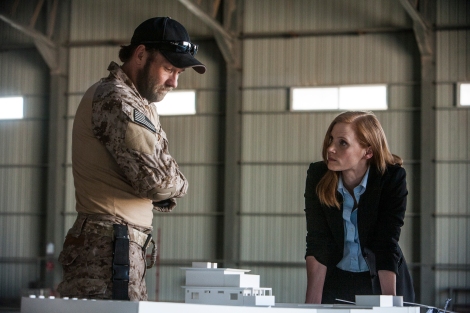
Zero Dark Thirty (Sony Pictures)
Producers: Kathryn Bigelow, Mark Boal, Megan Ellison
Awards: 5 Oscar noms, 1 Golden Globe win (best dramatic actress for Jessica Chastain), 2 CCMA wins (actress, editing), 5 BAFTA noms, DGA nom, WGA original screenplay nom.
Everywhere at once: “This is not a $45 million movie; this is an $85 million movie. There’s over 100 different sets in this movie, we filmed on three continents with helicopters and special effects and (covering) a 10-year time period and 100 speaking parts and a giant action sequence, and at times we were shooting like a TV schedule—five pages a day. Part of the challenge was getting this much scope—we filmed in Pakistan, we filmed in India, we filmed in Jordan, we filmed in Washington, we filmed in the U.K. Part of the challenge was getting this much scope on the screen, and we could really do that because Kathryn had a vision for how to do it, and because she shoots it and it’s done and we can move on. There’s not a lot of second-guessing going on,” says Boal.
No fear of Babel: “I like going to these places where there isn’t a lot of film infrastructure. Jordan has absolutely none. India has some. Of course there’s a big film industry there, but it wasn’t really geared to making a movie about an American CIA team hunting a terrorist, for any number of reasons. It’s hard to shoot action in India—very, very, very hard. You can’t do aerial photograph; there’s a million permits if you want to take a gun out,” adds Boal.
Red tape: “These are hard movies to get made. Negotiating with those governments, moving equipment in and out, dealing with security issues, dealing with the secrecy issues, dealing with the press, dealing with government pressure and investigations from our government. We were under investigation by Republicans since the day we started this movie for just trying to get information. That’s not easy to have hanging over your head when you’re simultaneously trying to arrange for the use of three military Black Hawks from a foreign government. It gets complicated pretty quickly,” adds the screenwriter-producer.
Worst-case scenario—production or post-release: “The politics is pretty tough, I will say. I would take the logistical challenge of trying to find a 40-ton crane in Jordan over dealing with Washington any day of the week,” Boal says.—Paul Brownfield

